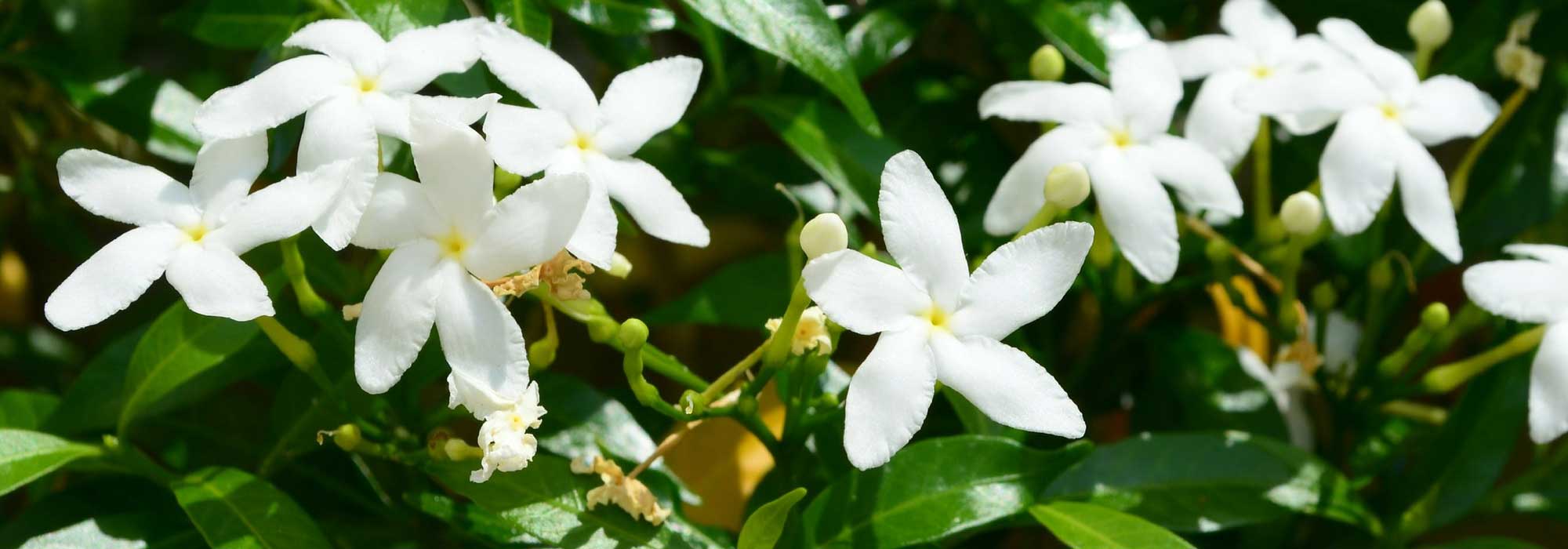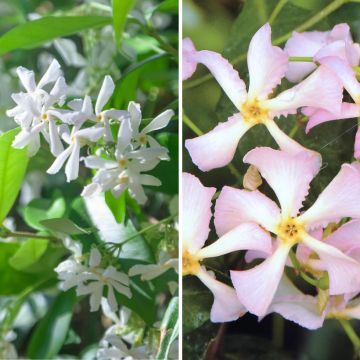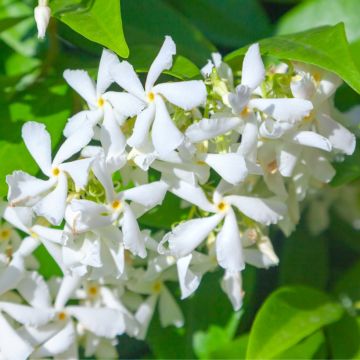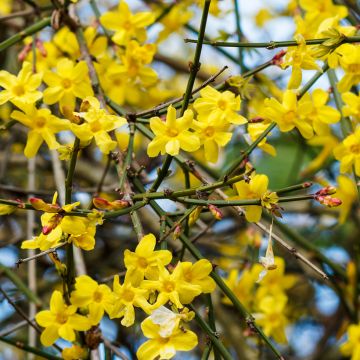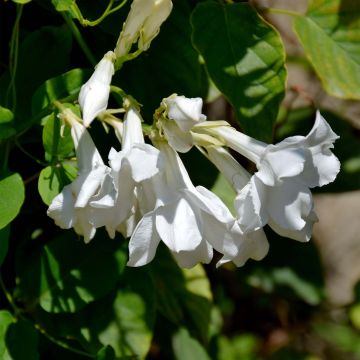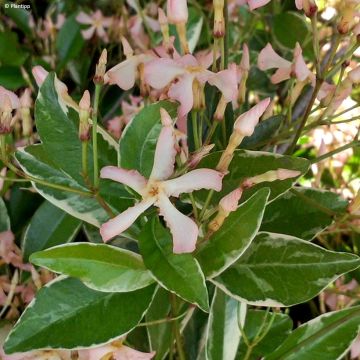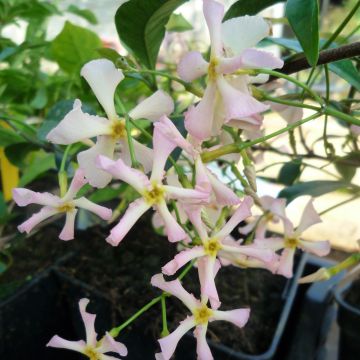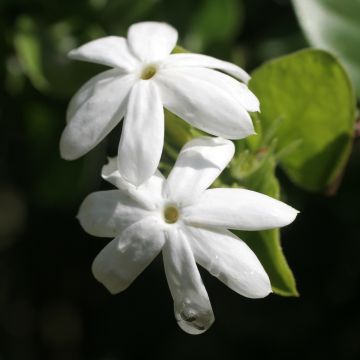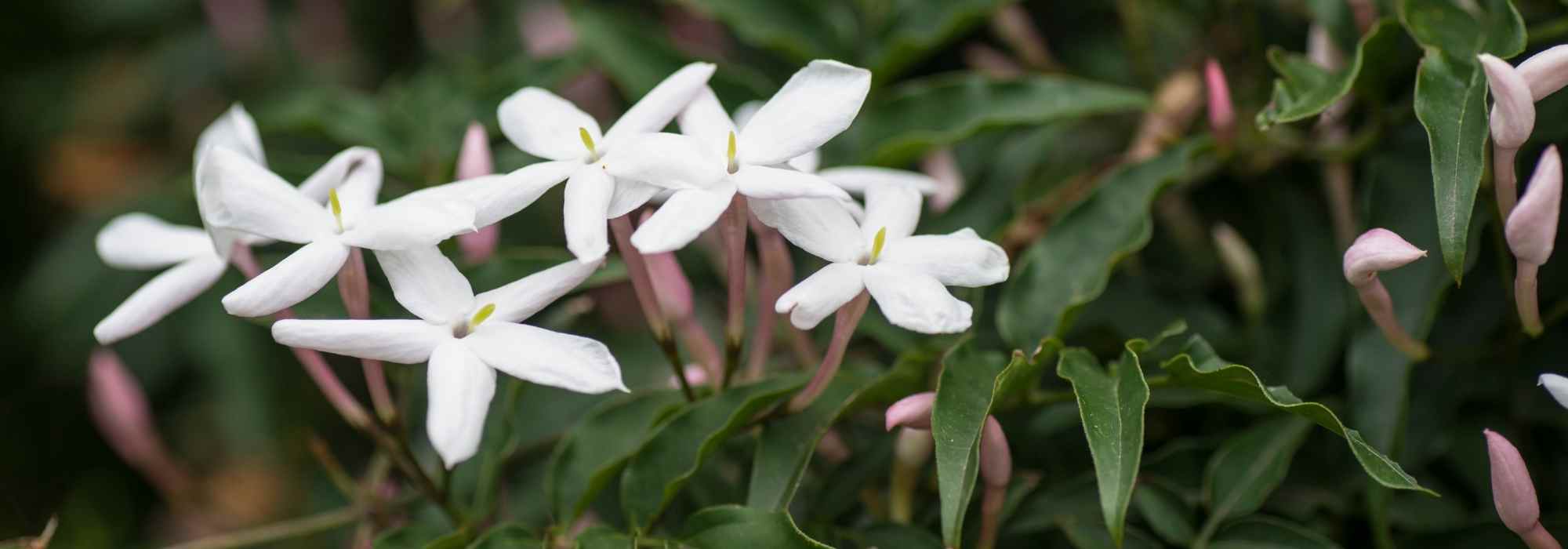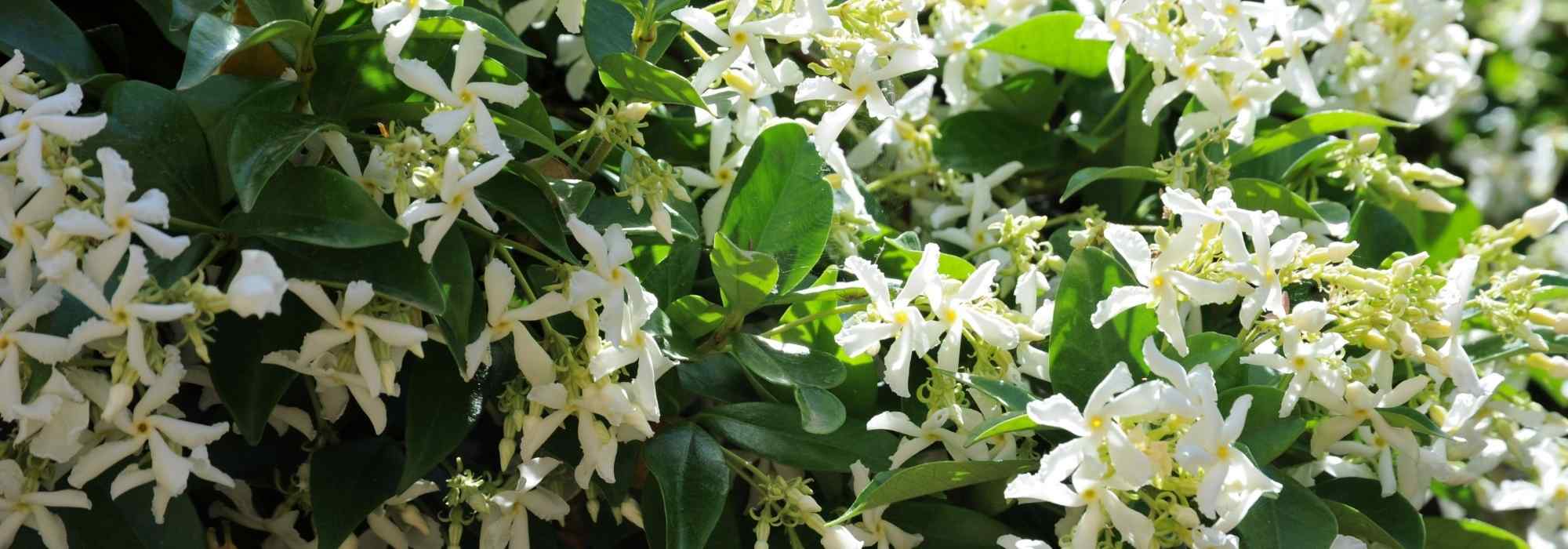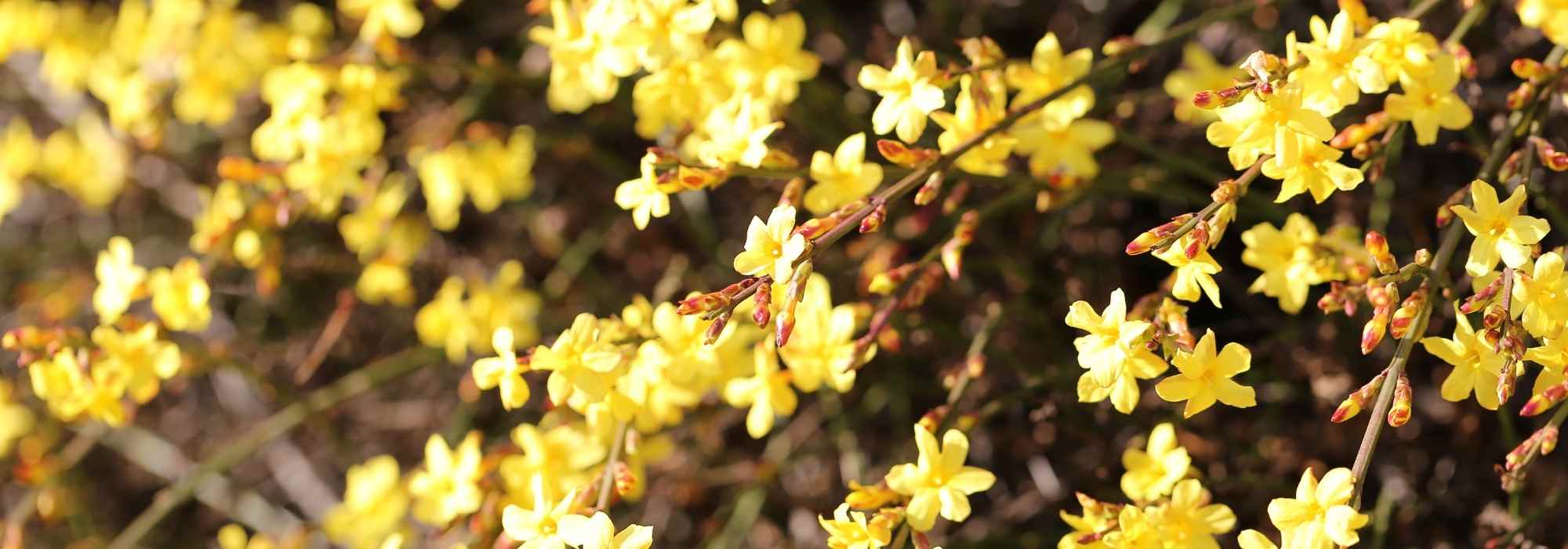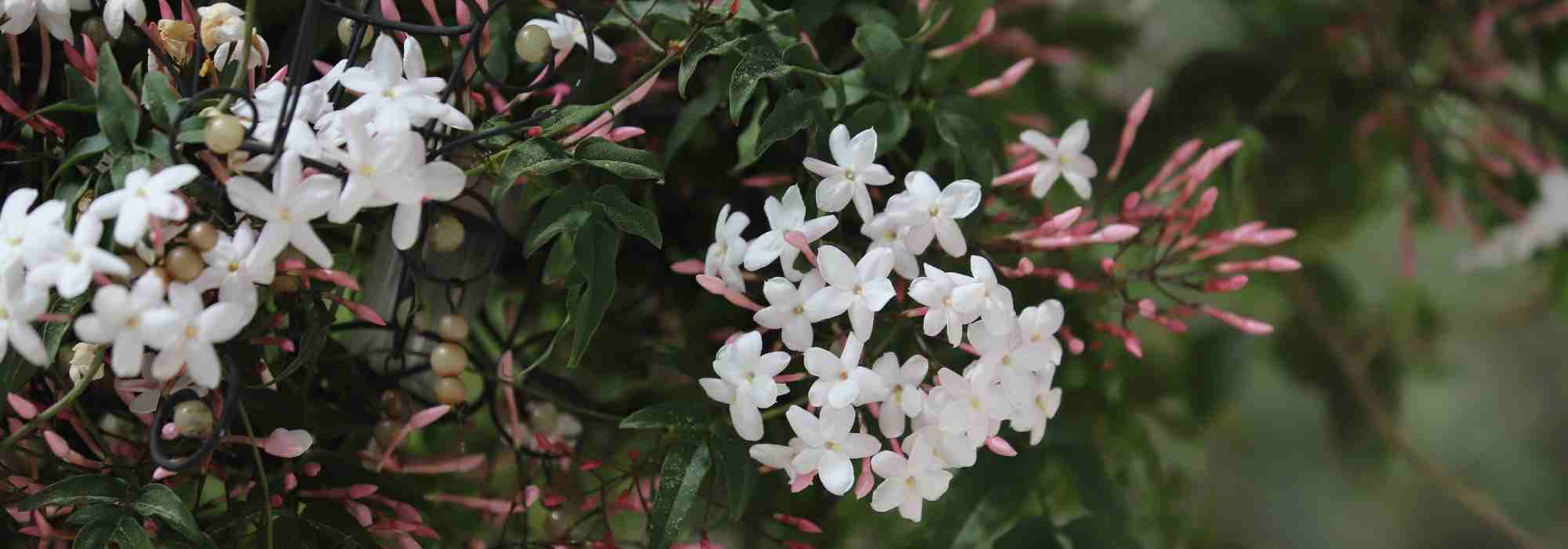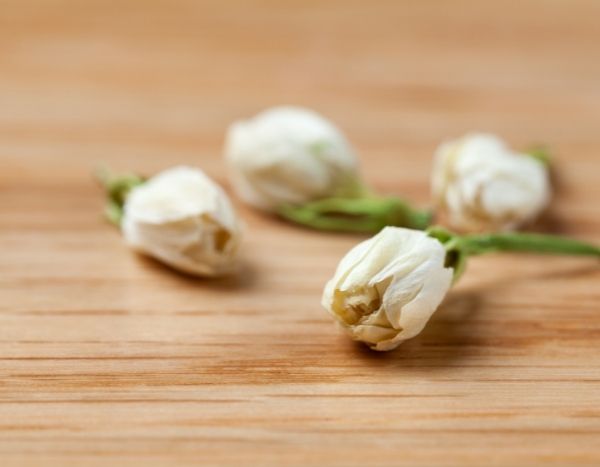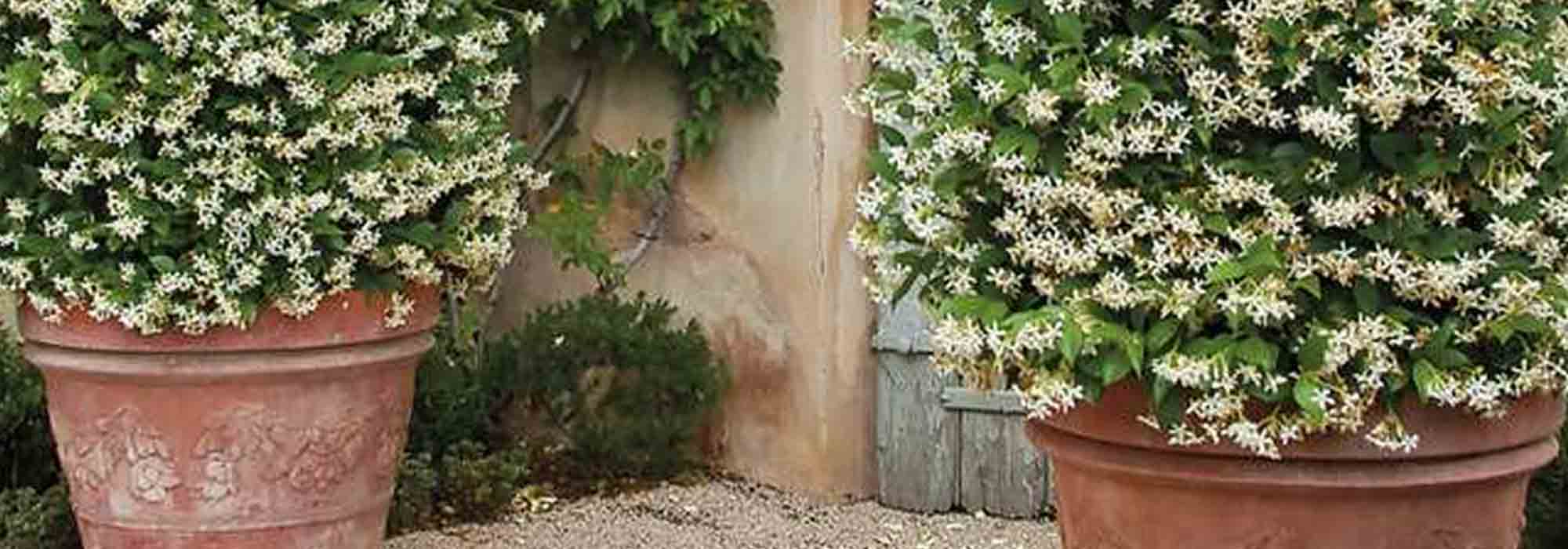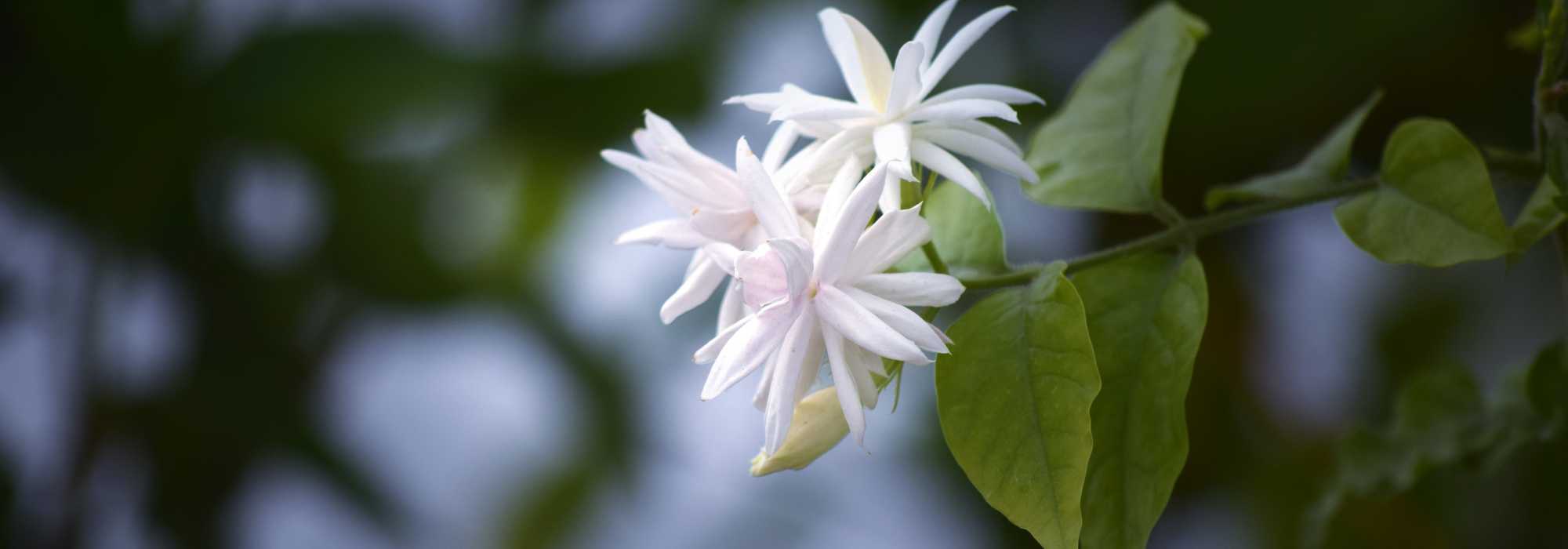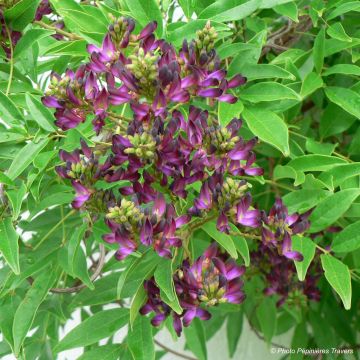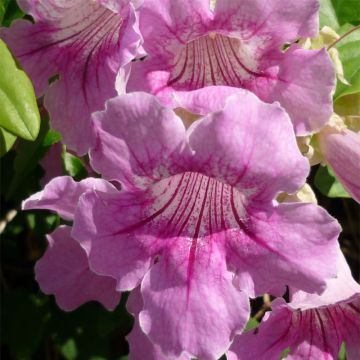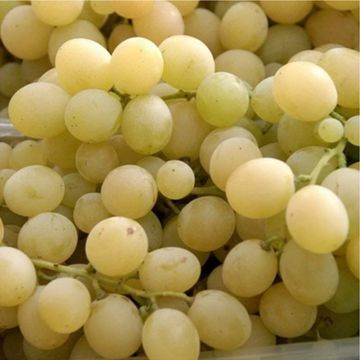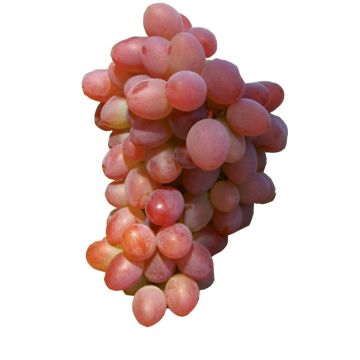

Jasminum officinale Clotted Cream - Common jasmine
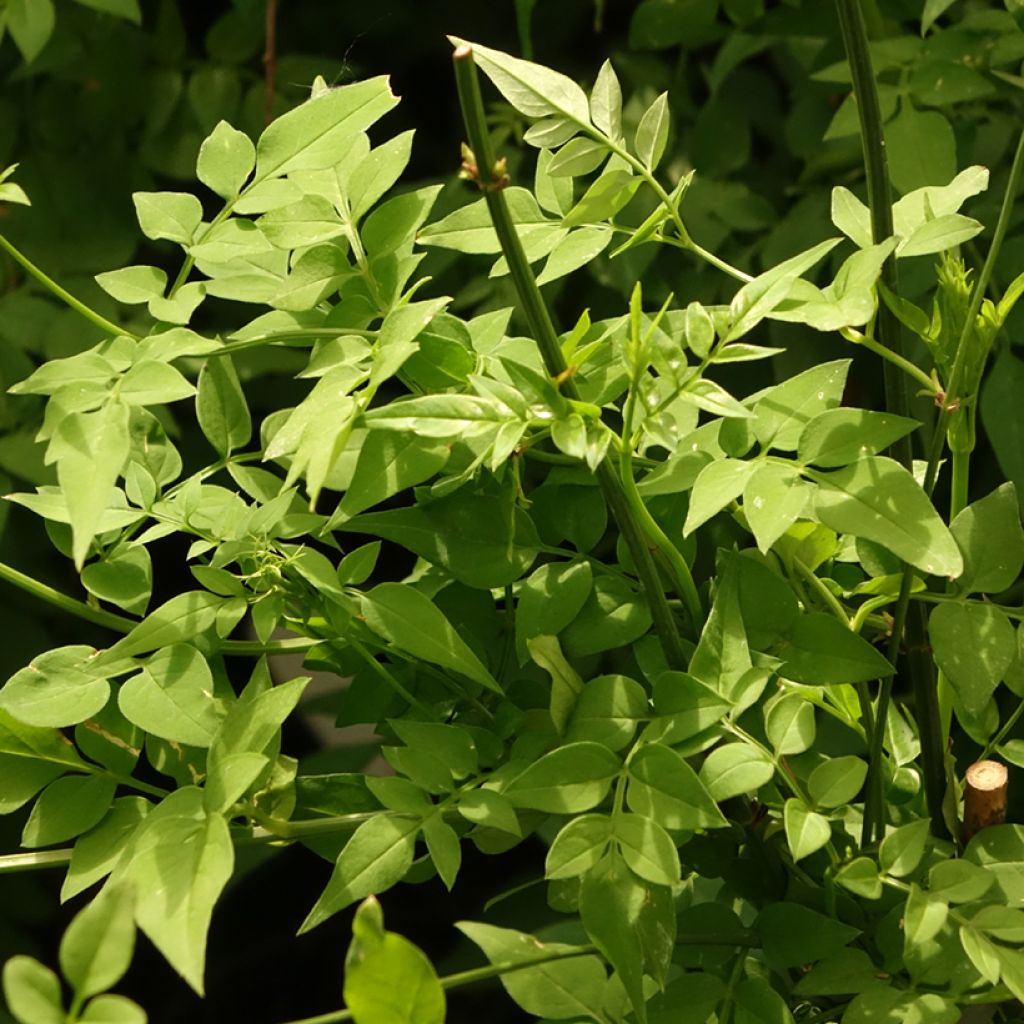

Jasminum officinale Clotted Cream - Common jasmine
Jasminum officinale Clotted Cream - Common jasmine
Jasminum officinale Clotted Cream
Common Jasmine, Poet's Jasmine, Summer Jasmine, White Jasmine
Graceful foliage, very soft original colour without being dull; resistant to heat and sun; worth a try! Only one flower so far, so I won't comment on the fragrance, but it looks promising.
Mélanie, 22/08/2024
Special offer!
Receive a €20 voucher for any order over €90 (excluding delivery costs, credit notes, and plastic-free options)!
1- Add your favorite plants to your cart.
2- Once you have reached €90, confirm your order (you can even choose the delivery date!).
3- As soon as your order is shipped, you will receive an email containing your voucher code, valid for 3 months (90 days).
Your voucher is unique and can only be used once, for any order with a minimum value of €20, excluding delivery costs.
Can be combined with other current offers, non-divisible and non-refundable.
Home or relay delivery (depending on size and destination)
Schedule delivery date,
and select date in basket
This plant carries a 6 months recovery warranty
More information
We guarantee the quality of our plants for a full growing cycle, and will replace at our expense any plant that fails to recover under normal climatic and planting conditions.

Would this plant suit my garden?
Set up your Plantfit profile →
Description
Jasminum officinale 'Clotted Cream', also known as common jasmine or summer jasmine, is a new variety with large yellow-cream flowers, as strongly scented as those of the species, blooming almost continuously from July to September. It is an evergreen, semi-evergreen, or even deciduous woody climber, with light foliage of a beautiful bright green. It prefers well-drained soil, full sun, and sheltered conditions, or can be kept in a cold greenhouse.
The 'Clotted Cream' Jasmine belongs to the Oleaceae family. Native to China, specifically the Himalayan regions, it grows in woods, hedges, and along rivers. Relatively hardy, this jasmine is easily cultivated in open ground in areas where the temperature does not drop below -15°C (5°F) for short periods. This liana will reach a height of 2.5m (8ft), spreading up to 2.5m (8ft), with fairly rapid growth. The flowering period is remarkably long, lasting for three months. The plant is covered with numerous small clusters of star-shaped flowers, 3 to 5cm (1 to 2in) in diameter, pale yellow to cream in colour with an almost intoxicating fragrance. The foliage is composed of pinnate leaves with 7 leaflets, bright green, deciduous below -10°C (14°F), but evergreen if the temperature is milder. The stems become woody and light brown with age. The young branches, which bear the foliage, are green, glabrous (or weakly pubescent), and angular or channelled.
Jasminum officinale 'Clotted Cream' climbs on trellises, arches, pergolas, stair railings, or balconies. Plant it in a pot on a terrace to fully enjoy its intense fragrance.
Its highly fragrant flowers are used to flavor tea and are used in traditional remedies in Asia. The essential oil extracted from it is used in both perfumery and cooking. Its aroma can be found in maraschino cherries.
Jasminum officinale Clotted Cream - Common jasmine in pictures


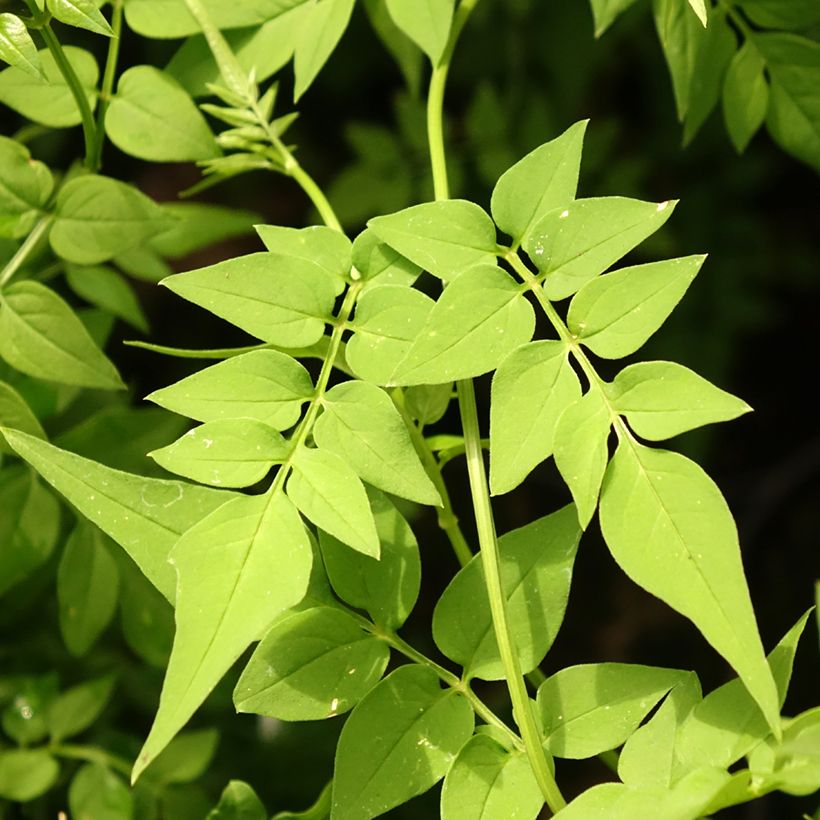

Plant habit
Flowering
Foliage
Botanical data
Jasminum
officinale
Clotted Cream
Oleaceae
Common Jasmine, Poet's Jasmine, Summer Jasmine, White Jasmine
Cultivar or hybrid
Other Jasmine
View all →Planting and care
Jasminum officinale 'Clotted Cream' is preferably planted in spring, in moist, fertile and well-drained soil, in full sun and sheltered from cold winds. Mulch the base and water generously as soon as the flowers appear. When the temperature drops below -10°C (14°F), the aboveground parts of the officinal jasmine freeze and turn black. But if the base is well established, new shoots will emerge in spring. Pruning is necessary at the end of winter when vegetation growth starts. This plant tolerates drought well once established. It can tolerate partial shade, but flowering is more abundant in full sun. Avoid exposing it to cold drafts to preserve its flowers. In cold areas, plant the jasmine against a south-facing wall, which will provide it with some warmth. For container cultivation: choose a container of 50cm (20in), with good, rich, moist and light soil, specifically for Mediterranean plants. From early spring until mid-September, enrich with liquid fertiliser every 15 days, always on moist soil. In summer, it needs abundant watering, but in winter, allow the root ball to dry well between two waterings. The jasmine is very vigorous even in a pot and can become bare at the base. In this case, it is necessary to prune the old branches and leave only 3 young shoots. In winter, place it in a veranda or a temperate greenhouse, around 16°C (60.8°F), with plenty of light. Regularly spray the foliage with non-alkaline water, this will prevent attacks from red spider mites.
Planting period
Intended location
Care
Planting & care advice
-
, onOrder confirmed
Reply from on Promesse de fleurs
Similar products
Haven't found what you were looking for?
Hardiness is the lowest winter temperature a plant can endure without suffering serious damage or even dying. However, hardiness is affected by location (a sheltered area, such as a patio), protection (winter cover) and soil type (hardiness is improved by well-drained soil).

Photo Sharing Terms & Conditions
In order to encourage gardeners to interact and share their experiences, Promesse de fleurs offers various media enabling content to be uploaded onto its Site - in particular via the ‘Photo sharing’ module.
The User agrees to refrain from:
- Posting any content that is illegal, prejudicial, insulting, racist, inciteful to hatred, revisionist, contrary to public decency, that infringes on privacy or on the privacy rights of third parties, in particular the publicity rights of persons and goods, intellectual property rights, or the right to privacy.
- Submitting content on behalf of a third party;
- Impersonate the identity of a third party and/or publish any personal information about a third party;
In general, the User undertakes to refrain from any unethical behaviour.
All Content (in particular text, comments, files, images, photos, videos, creative works, etc.), which may be subject to property or intellectual property rights, image or other private rights, shall remain the property of the User, subject to the limited rights granted by the terms of the licence granted by Promesse de fleurs as stated below. Users are at liberty to publish or not to publish such Content on the Site, notably via the ‘Photo Sharing’ facility, and accept that this Content shall be made public and freely accessible, notably on the Internet.
Users further acknowledge, undertake to have ,and guarantee that they hold all necessary rights and permissions to publish such material on the Site, in particular with regard to the legislation in force pertaining to any privacy, property, intellectual property, image, or contractual rights, or rights of any other nature. By publishing such Content on the Site, Users acknowledge accepting full liability as publishers of the Content within the meaning of the law, and grant Promesse de fleurs, free of charge, an inclusive, worldwide licence for the said Content for the entire duration of its publication, including all reproduction, representation, up/downloading, displaying, performing, transmission, and storage rights.
Users also grant permission for their name to be linked to the Content and accept that this link may not always be made available.
By engaging in posting material, Users consent to their Content becoming automatically accessible on the Internet, in particular on other sites and/or blogs and/or web pages of the Promesse de fleurs site, including in particular social pages and the Promesse de fleurs catalogue.
Users may secure the removal of entrusted content free of charge by issuing a simple request via our contact form.
The flowering period indicated on our website applies to countries and regions located in USDA zone 8 (France, the United Kingdom, Ireland, the Netherlands, etc.)
It will vary according to where you live:
- In zones 9 to 10 (Italy, Spain, Greece, etc.), flowering will occur about 2 to 4 weeks earlier.
- In zones 6 to 7 (Germany, Poland, Slovenia, and lower mountainous regions), flowering will be delayed by 2 to 3 weeks.
- In zone 5 (Central Europe, Scandinavia), blooming will be delayed by 3 to 5 weeks.
In temperate climates, pruning of spring-flowering shrubs (forsythia, spireas, etc.) should be done just after flowering.
Pruning of summer-flowering shrubs (Indian Lilac, Perovskia, etc.) can be done in winter or spring.
In cold regions as well as with frost-sensitive plants, avoid pruning too early when severe frosts may still occur.
The planting period indicated on our website applies to countries and regions located in USDA zone 8 (France, United Kingdom, Ireland, Netherlands).
It will vary according to where you live:
- In Mediterranean zones (Marseille, Madrid, Milan, etc.), autumn and winter are the best planting periods.
- In continental zones (Strasbourg, Munich, Vienna, etc.), delay planting by 2 to 3 weeks in spring and bring it forward by 2 to 4 weeks in autumn.
- In mountainous regions (the Alps, Pyrenees, Carpathians, etc.), it is best to plant in late spring (May-June) or late summer (August-September).
The harvesting period indicated on our website applies to countries and regions in USDA zone 8 (France, England, Ireland, the Netherlands).
In colder areas (Scandinavia, Poland, Austria...) fruit and vegetable harvests are likely to be delayed by 3-4 weeks.
In warmer areas (Italy, Spain, Greece, etc.), harvesting will probably take place earlier, depending on weather conditions.
The sowing periods indicated on our website apply to countries and regions within USDA Zone 8 (France, UK, Ireland, Netherlands).
In colder areas (Scandinavia, Poland, Austria...), delay any outdoor sowing by 3-4 weeks, or sow under glass.
In warmer climes (Italy, Spain, Greece, etc.), bring outdoor sowing forward by a few weeks.






























